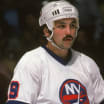For 10 years, teams from China have been competing in the New York Islanders international tournament. They're good too, able to hold their own against teams from Long Island, Japan, Italy and more.
Specifically, the teams are a part of Project Hope, the hockey and education initiative started by Islanders co-owner Charles Wang. The fact that they've been icing teams and coming over for a decade speaks to Wang's work to grow the game in China, a place that physically couldn't be further away from the NHL.
Islanders Leaving Youth Hockey Legacy in China
Starting in 2005, Project Hope has blazed trail to grow youth hockey in China
The story of Project Hope is a fascinating and ambitious one. Wang, the first Asian-American owner in the NHL, wanted to introduce the game in China and help it grow. It was Wang's vision that's helped spark interest in hockey in China.
Several teams including the Boston Bruins and Toronto Maple Leafs have invested there since, while Vancouver and LA played a pair of exhibition games in Shanghai in September. They owe the blueprint to Wang, who blazed that trail back in 2005 with Project Hope.
Wang and the Islanders established the program in the northeastern cities of Harbin and Qiqihar in the Heilongjiang province. They seemed like suitable environments, based on their cold climates, but the growth of the program can't be fully realized without knowing where the state of hockey was beforehand.
"We get out onto the practice rink and there were holes in the boards," Islanders Associate Coach Greg Cronin said of his 2006 trip to Qiqihar. "The kids had the wrong-sized skates on, they had two left gloves on. If they were left shots, they were using right shot sticks. That's a snapshot of how innocent it was."
Footage of the early trips show chicken wire instead of twine in the nets and Cronin said the pucks were misplaced during the first practice. Despite all of those obstacles, kids were pouring onto the ice for their first session that year and they had nearly double the amount of kids they were expecting. There was a sense of interest, but the equipment and facilities would need to be upgraded to foster it.
"Equipment, there just wasn't enough equipment," Wang said in a sit-down interview with Islanders TV. "We gave them all new equipment. We provided the ice, all the boards, the lighting, the equipment. We wanted to make them part of what the hockey world looks at."
Since 2006, the Islanders have donated over $5M in equipment to Project Hope and built or refurbished 25 rinks in China.
Equipment and facilities were the foundation of Project Hope, but they knew they weren't going to be around forever to teach the kids. The other objective was to train Chinese coaches to develop the players. They taught them - through interpreters - how to teach the principles of hockey, skating, puck handling, defensive skills, etc.
"They hadn't really focused on grassroots level hockey, I believe that's what Charles' mission was," Cronin said. "To get hockey embedded with the young kids. You can set a template, you can create some structure there and create a plan. Ultimately we were there to lay the framework down."
Cronin helped train coaches in his trip to China and other ambassadors, including Bryan Trottier and Olympic gold medalist Angela Ruggerio have gone over since.
Even from afar, Wang continued to support the youth teams. In Dec. 2005 and Jan. 2006, the Islanders sponsored two Chinese teams, one from Harbin and one from Qiqihar, to compete in the Bell Capital Cup in Ottawa. In Dec. 2008 and Jan. 2009 the Jr. Islanders went over to play in China and again in 2014 and 2016. This is in addition to 10 years of the international tournament. Prior to Project Hope, opportunities like playing in international youth tournaments didn't exist for kids in China.
"He wants to thank Charles Wang and a lot of the possibilities that they have to be able to play hockey and have the support - to have lessons or ice time - it was all from the support of Charles," Project Hope player Whenhan Hu said through translator Joseph Fu. "First and foremost he'd like to thank Charles. When he's in China, there's a lot of hockey-related things to go to."
Congrats to all the teams who competed in the 10th annual #Isles International Tournament at @NHIceCenter!
— New York Islanders (@NYIslanders) January 20, 2018
🇺🇸🇮🇹🇨🇳🇯🇵 pic.twitter.com/wXz0mJQV1L
Hu has been a part of Project Hope since he was seven years old. Other kids who have spent time in the program said the skill level has been improving with each passing year.
"From Project Hope experience year after year, the students, players and coaches, all of their skills got better," Jing Han, another Project Hope player at the international tournament said through Fu. "Now they can do a lot of the American playing style. There's more and more understanding from the coaches because of the evolution of Project Hope."
Two players on China's World Junior team are products of Project Hope, while a third was invited to try out for the team. China's World Junior team is currently competing in Division III competition.
All three players also play for the Beijing Shougang Eagles, who have trained and played at Northwell Health Ice Center, the Islanders official practice facility, for a year and a half and compete in the USPHL. The Beijing team, which is developing a team for the 2022 Olympic Games isn't affiliated with Project Hope, but it's something for the kids to strive for. There is also potential that kids from Project Hope could play in the Olympics one day.
Hockey still has a long way to go before it becomes a mainstream sport in China, but there are other indicators that it's growing. China's first KHL team - Kunlun Red Star - joined the league int he 2016-17 season while Islanders 2015 sixth-round pick Andong Song became the first Chinese-born player to be drafted to the NHL.
Wang isn't responsible for all of that, but he's certainly played a part in growing the game. For Project Hope to have produced kids that play in the World Juniors and a growing generation of hockey players in China 12 years after being founded, that's more than anyone could have hoped for.


















